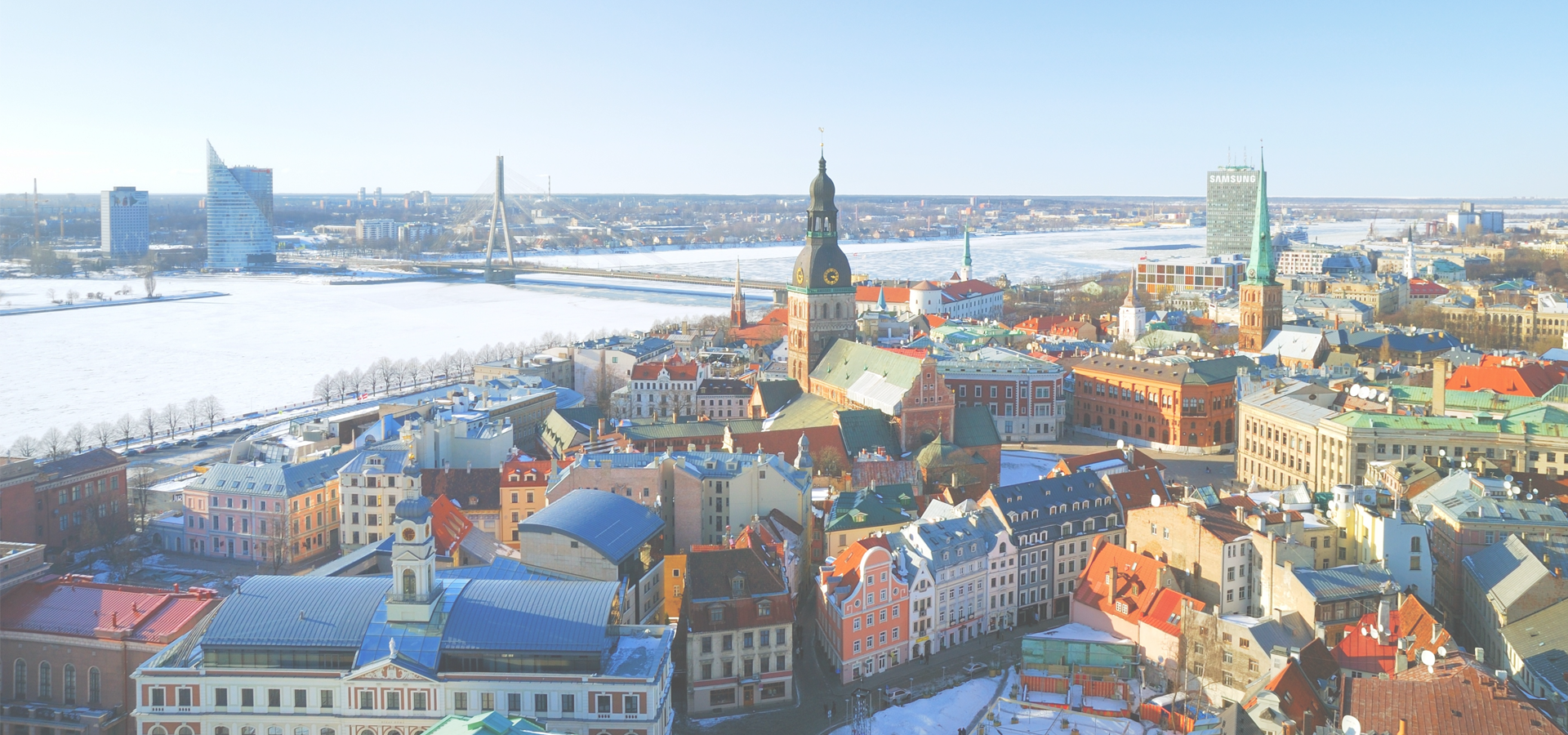Ludza, Latvia
🇱🇻 Ludza is a town in the Latgale region of eastern Latvia. Ludza is the oldest city in Latvia. Ludza is the administrative centre of Ludza Municipality that is located nearby the Russian border. The territory of the municipality is crossed by the internationally important Riga-Moscow road and by the Riga-Moscow railway.
History After Nikolay Karamzin, Ludza was first mentioned as Лючин in Hypatian Codex dating back to 1173 or 1177. In 1399 the Livonian Order built a stone fortress atop an older Latgalian fortress and used Ludza as an eastern outpost in Livonia. Ludza Castle ruins can be visited nowadays.
Polish-Lithuanian Commonwealth After the dissolution of the Livonian Order in 1561, Ludza was incorporated into the Polish–Lithuanian Commonwealth and became a part of Wenden Voivodeship. In January 1626, during the Polish-Swedish War, Ludza was captured without a battle by Sweden due to the defeat of the forces of Polish-Lithuanian marshal Jan Stanisław Sapieha. Later it was recaptured by Polish forces.
In 1678, Commonwealth's Sejm appointed a special commission in Grodno that had to build Catholic churches in Latgale. A year later, the commission visited Ludza and in 1687, building of the church was completed. In 1736, the church was destroyed by fire.
Russian Empire After the first partition of Poland in 1772, Ludza was taken over by the Russian Empire and added to Vitebsk Governorate. Ludza received town rights in 1777 from Catherine II of Russia. During the first part of the 19th century, most of the population of Ludza were Jews (67% in 1815) and there were 7 synagogues in the town.
Latvia After signing of the Latvian–Soviet Peace Treaty in 1920, Ludzas apriņķis and Ludza as its administrative centre was incorporated into the Republic of Latvia.
During World War II, Ludza was under German occupation from 4 July 1941 until 23 July 1944. It was administered as a part of the Generalbezirk Lettland of Reichskommissariat Ostland. The Jewish population was restricted to a ghetto. From July 1941 until the spring of 1942, hundreds of Jews were murdered in mass executions perpetrated by Einsatzgruppen.
After Latvia regained its independence in 1991, Ludza became the administrative centre of Ludza District. On July 1, 2009, due to the introduction of the new administrative division in Latvia it became the centre of Ludza Municipality.
Economy: Tourist Industry Ludza Museum and Ludza Tourism Information Centre offer excursions around the town. The most visited sights are: • Ludza History Museum and open-air exposition • Roman Catholic Church • Orthodox Church • Evangelical Lutheran Church • Old Believers' Church • Ruins of the medieval Ludza Castle • Ludza Craftsmen Centre
Several lakes offer fishing and water tourism possibilities.
Transport: Road Ludza is located on the main Riga - Moscow road, as a part of European route E22, and only 30 km away from the Latvian-Russian border.
Transport: Rail Ludza Train Station is a part of the Rēzekne II - Zilupe railway line that was originally built in 1901 as a part of Ventspils - Moscow line. The current station building was built after the World War II.
Education The children of Ludza may attend three pre-school educational institutions - "Rūķītis", "Pasaciņa" and "Namiņš". Elementary and secondary education curricula are provided by Ludza Gymnasium and Ludza Secondary School #2, as well as by Ludza Evening Secondary School. Additional out of school activities are offered at: • Ludza Music Primary School (music school with integrated primary school) • Ludza Art School • Ludza Children and Youth Centre • Ludza Sport School.
Demographics As of 2020, the town had a population of 7,667, of which 4,455 (58.1%) were ethnic Latvians, 2,661 (34.7%) were ethnic Russians, 168 (2.1%) were Belarusians, 93 (1.2%) were Ukrainians, 63 (0.8%) were Poles, 24 (0.3%) were Lithuanians, and 187 (2.4%) belonging to other ethnic groups.
Riga Time

Ludza has a population of over 7,667 people. Ludza also forms the centre of the wider Ludza Municipality which has a population of over 11,739 people.
Twin Towns, Sister Cities Ludza has links with:
🇩🇪 Bad Bodenteich, Germany 🇧🇾 Brest, Belarus 🇧🇾 Hlybokaye, Belarus 🇵🇱 Międzyrzec Podlaski, Poland 🇧🇾 Navapolatsk, Belarus 🇷🇺 Nevel, Russia 🇧🇾 Novopolotsk, Belarus 🇱🇹 Rokiškis, Lithuania 🇷🇺 Sebezh, Russia🇷🇺 Zheleznogorsk-Ilimsky 56.583
🇷🇺 Yoshkar-Ola 56.631
🇿🇦 Krugersdorp 27.767
🇺🇦 Mohyliv-Podilskyi 27.783
Locations Near: Ludza 27.727,56.5451
🇱🇻 Daugavpils 26.542,55.89 d: 103.3
🇧🇾 Navapolatsk 28.65,55.533 d: 126.3
🇧🇾 Novopolotsk 28.66,55.532 d: 126.7
🇧🇾 Polatsk 28.8,55.483 d: 135.6
🇧🇾 Polotsk 28.8,55.483 d: 135.6
🇪🇪 Tartu 26.715,58.371 d: 211.8
Antipodal to: Ludza -152.273,-56.545
🇵🇫 Papeete -149.566,-17.537 d: 15671.7
🇹🇴 Nuku'alofa -175.216,-21.136 d: 15650.4
🇦🇸 Pago Pago -170.701,-14.279 d: 15061.3
🇼🇸 Apia -171.76,-13.833 d: 14984.3
🇺🇸 Hilo -155.089,19.725 d: 11530.1
🇺🇸 Maui -156.446,20.72 d: 11414.7
🇺🇸 Maui County -156.617,20.868 d: 11397.5
🇺🇸 Kahului -156.466,20.891 d: 11395.5